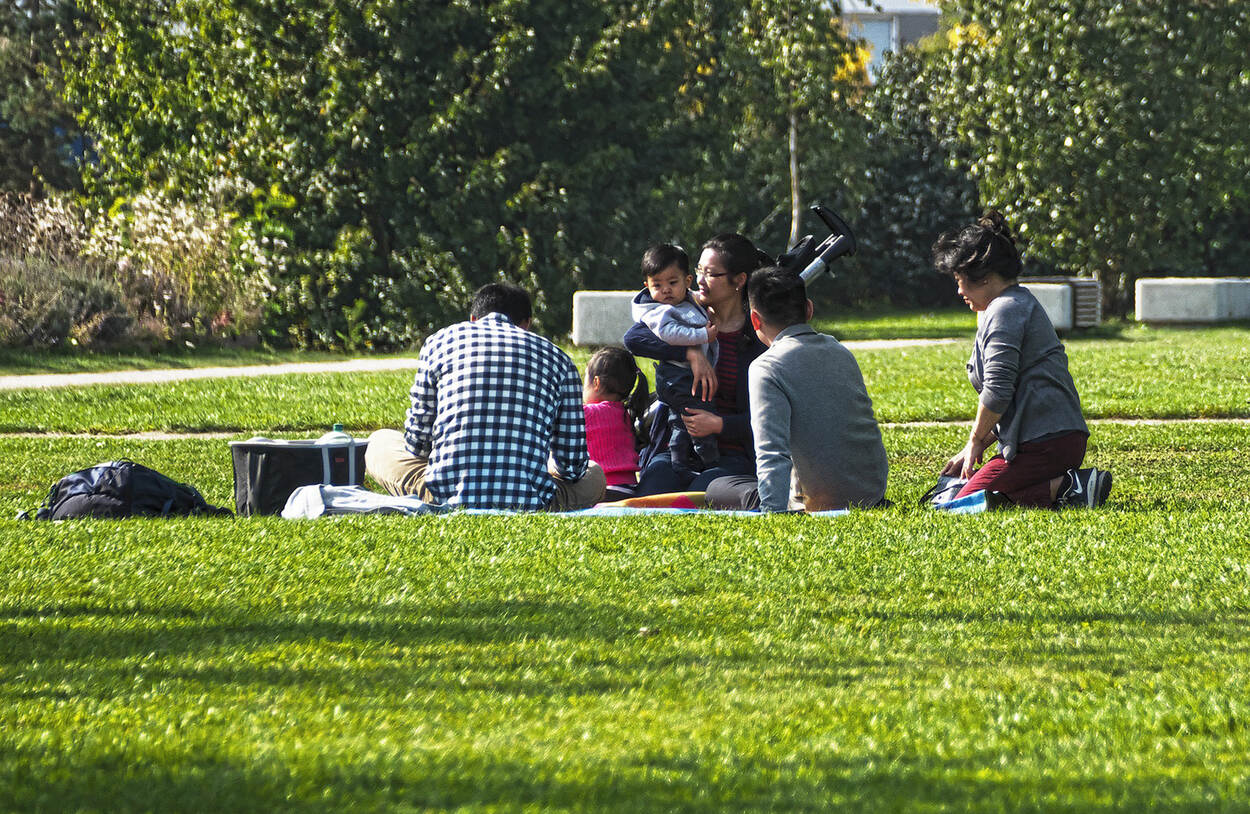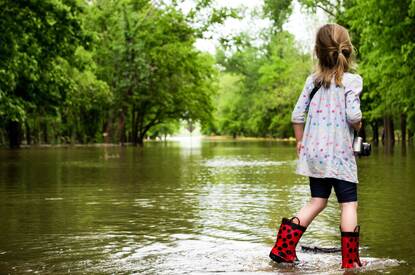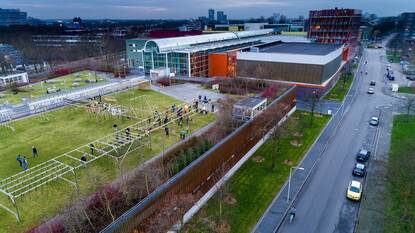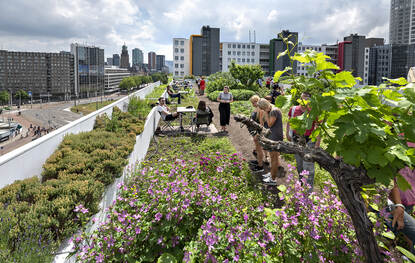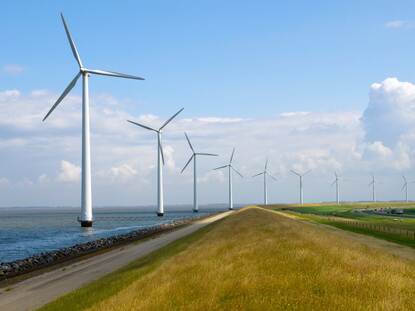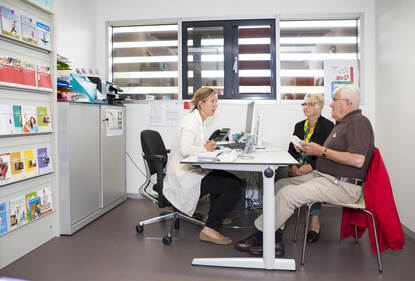What health problems could become relevant due to climate change? What knowledge do we need for solutions to those problems? RIVM brainstorms with national, regional and local authorities and contributes to a broad knowledge base through research.
'I want to make knowledge available in such a way that people can talk about what is really important to them.'
Heat
One of the health problems in the Netherlands is heat. It is a direct consequence of climate change.
As coordinator of the National Heat Plan, Werner Hagens at RIVM is also involved in heat research. Among other activities, he is a member of the Global Heat Health Information Network, which exchanges knowledge and operational perspectives.
RIVM and international partners are also examining the health consequences of heat. The findings showed that 31% of heat-related deaths in the Netherlands can already be attributed to climate change. That amounts to almost 250 deaths a year.
“Climate change is not some distant future problem; it is here and now. We are already seeing the impact of climate change on health: from heat, from allergies. We do not yet know enough to see exactly how significant that effect is. But we can see where the trend is headed,” says Joost van der Ree, Programme Manager for Climate at RIVM.
“Climate policy helps to reduce these health effects in three ways. In the long term, climate deterioration will reduce in intensity due to climate mitigation. Future health effects will be minimised as a result. Climate adaptation can help by preventing or reducing those future effects. In addition, climate policy also has a wider impact on health. In the short term, reducing fossil fuel consumption will yield health benefits. Climate adaptation can also contribute to a greener, healthier living environment.”
These findings came from a RIVM study commissioned by the Ministry of Economic Affairs, Agriculture and Innovation, in which Van der Ree and fellow researchers charted the health effects in the Netherlands with and without climate policy.
Improving residential quality
Society as a whole suffers during periods of extreme heat. It is possible to plan for that, Van der Ree believes. Starting now, we can use the energy transition to improve residential quality in our homes. “If you are making homes more sustainable anyway, use that opportunity to ensure they will be cool in summer. And give people information. How do I adjust that ventilation system? How do I handle maintenance? How do I maintain a healthy indoor climate? Improve overall residential quality, so that people really get something better in return.”
Combining knowledge on health effects and measures
RIVM is contributing to a range of reports and research programmes for the various ministries. Obviously, each ministry has its own focus in that context. “We are eager to combine knowledge on health effects and measures,” Van der Ree says, “so policy-makers can reach decisions based on that integrated knowledge.” A resource has been provided for citizens: the Atlas of the Living Environment. “It offers lots of tips to make your home more sustainable and make your own living environment greener.”
Solutions for wind turbine blades
Another complex consideration is assessing how different topics are related and how they interact. Van der Ree: “If you have to choose between solar panels and wind turbines in the energy transition, the initial response might be: solar panels are a better option, because wind turbines are large and noisy. But if you look at it in the context of the broader energy system we are creating together, you might opt for a different choice. You want to consider all the advantages and disadvantages.”
In actual practice, a single drawback is sometimes blown out of proportion. As an example, Van der Ree mentions the debate about whether or not wind turbines can be considered circular, citing rotor blades as a waste problem. “Similar issues arise in many areas. Sometimes the solution is to swap a big environmental problem for a smaller one. And then that smaller problem can be resolved through innovation. That is happening now with those rotor blades; the business community is working hard to find circular alternatives.”
Knowledge that people can really use
“What really motivates me is getting people excited about working on climate, as a major societal challenge,” Joost van der Ree says. “What measures would be most effective to resolve or reduce the problem? Our knowledge is designed to help people make good choices. For ministries, local policy-makers, and individuals.
I want to make knowledge available in such a way that people can talk about what is really important to them.”
'We bring together knowledge about health effects and measures, so that policy-makers can make decisions based on that integrated knowledge.'
Michiel Hoorweg is coordinating policy officer with the Public Health department at the Ministry of Health, Welfare and Sport (VWS). The Ministry has plans for a research programme on Climate and Health. “We have a lot to do in the next few years to address the climate change that is coming. We want to identify the health risks. Heat, infectious diseases, allergies, skin cancer and so on.”
The Ministry has asked the Netherlands Organisation for Health Research and Development (ZonMw) and RIVM to make preparations, in anticipation of the research programme. “Such as: what links need to be established within RIVM to pool relevant knowledge? Knowledge that is sometimes dispersed throughout RIVM at this point needs to be combined coherently. We also need to acquire new knowledge. What do we know, and what do we still need to learn? What takes priority?”
Greening the living environment
Climate policy has a strong focus on greening the living environment. Why is that? Michiel Hoorweg: “Even apart from the climate benefits, greenery is good for health, and that includes mental health. Our current understanding is that the benefits of green outweigh the risks. Green areas can be used for water catchment. Greenery also provides cooling, reducing the formation of heat islands.”
At the same time, the risks also need to be considered. “No one wants an increase in tick bites, so how do we prevent that? The same challenge applies to allergies. The aim is not for people to have more problems with hay fever. Can we mitigate that by selecting specific trees, for example?”
Preparations
Another task that RIVM is working on is a monitor to track climate change. The Netherlands Environmental Assessment Agency (PBL) and RIVM collect a great deal of relevant data for this purpose. Does the data provide sufficient information to determine which health effects can be attributed to climate change?
Michiel Hoorweg emphasises that research choices have not yet been finalised. “It is purely preparations at this point. This is the direction we are thinking in. We are exploring the best way to adopt measures to reduce negative health effects from climate change.”
